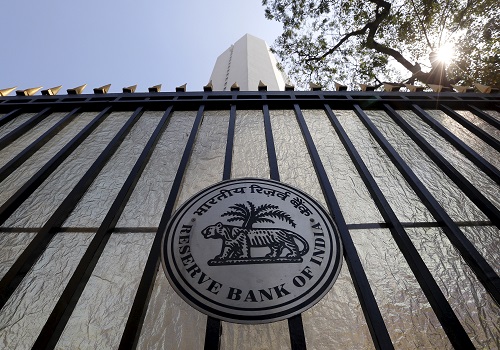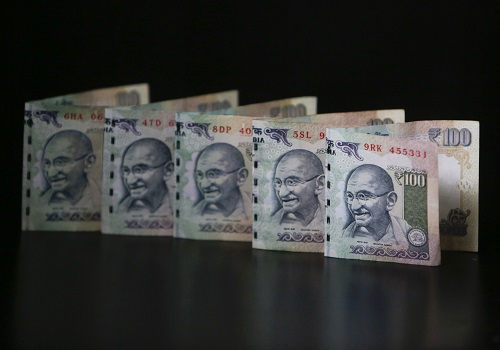Zinc trading range for the day is 210.7-216.3 - kedia Advisory

Follow us Now on Telegram ! Get daily 10 - 12 important updates on Business, Finance and Investment. Join our Telegram Channel
Gold
Gold prices experienced a notable uptick, settling up by 0.59% at 62345, supported by a weaker dollar and heightened safe-haven demand amid escalating tensions in the Middle East. Despite the cautious stance of U.S. Federal Reserve officials on early rate cuts, gold found favor among investors seeking refuge from geopolitical uncertainties. Federal Reserve Bank of Philadelphia President Patrick Harker's acknowledgment of a potential rate cut in the future, albeit without specifying the timing, contributed to the precious metal's appeal. Harker emphasized the need for careful consideration in determining the appropriate timing for reducing short-term borrowing costs. Physical gold demand witnessed a resurgence in China as the top bullion hub reopened after the Lunar New Year holidays. In India, despite a correction in domestic gold prices, dealers charged a premium of up to $3 an ounce over official domestic prices, reflecting steady demand. However, jewelry demand remained weak during the ongoing wedding season, while purchases of coins and bars saw increased traction. Technically, the gold market observed short covering, with a -0.22% drop in open interest, settling at 13,301. The metal is currently supported at 62020, with a potential test of 61690. On the upside, resistance is expected at 62535, and a breakthrough could lead to testing levels around 62720. Traders should closely monitor global geopolitical developments, central bank communications, and the evolving demand dynamics for strategic insights into the precious metal's future movements.
Trading Ideas:
* Gold trading range for the day is 61690-62720.
* Gold gains buoyed by a softer dollar and escalating tensions in the Middle East.
* Fed's Waller sees 'no rush' to cut interest rates
* Fed's Harker: Central bank likely on track for rate cut this year
Silver
Silver prices edged up by 0.3%, settling at 70479, driven by safe-haven buying amid persistent concerns over geopolitical tensions in the Middle East. A slightly weaker dollar also contributed to the bullish movement in the precious metal. Traders strengthened their positions against potential U.S. interest-rate cuts before June, reacting to statements from Fed officials expressing reluctance towards early rate reductions. Fed Governor Christopher Waller's remark about being "in no rush" to cut rates and the minutes from the last Fed meeting, revealing policymakers' concerns about the risks of premature rate cuts, influenced market sentiment. Higher-than-expected U.S. consumer and producer prices dampened hopes for an early rate cut, adding downward pressure on silver. Fed Vice Chair Philip Jefferson expressed cautious optimism about progress on inflation, emphasizing a comprehensive evaluation of data before considering rate cut options. Philadelphia Fed President Patrick Harker noted an approaching point for rate cuts but uncertainty about the timing. Fed Governor Lisa Cook indicated a preference for greater confidence in inflation convergence before initiating rate cuts. According to the CME FedWatch Tool, the current market pricing suggests a 30% chance of the Fed starting rate cuts in May, significantly lower than the over 80% chance a month ago. Technically, the silver market witnessed short covering, with a -10.17% drop in open interest, settling at 19,544. The metal is currently supported at 70010, with a potential test of 69545. On the upside, resistance is expected at 70725, and a breakthrough could lead to testing levels around 70975.
Trading Ideas:
* Silver trading range for the day is 69545-70975.
* Silver gains amid persisting concerns over geopolitical tensions in Middle East.
* Fed Governor Christopher Waller said he is in "no rush" to cut rates.
* Policymakers at the Fed's last meeting were concerned about the risks of cutting interest rates too soon
Crude oil
Crude oil prices faced a decline of -2.79%, settling at 6353, impacted by a report from the International Energy Agency (IEA) highlighting a slowdown in global oil demand due to increasing shifts towards renewable energy sources. The prospect of delayed interest rate cuts by the U.S. Federal Reserve, as indicated by Fed Governor Christopher Waller, added to the downward pressure on oil prices. Waller's statement suggesting that interest rate cuts should be postponed by at least another couple of months raised concerns about potential economic growth slowdown, which could, in turn, curb oil demand. The IEA report and the delay in rate cut expectations created a bearish sentiment in the crude oil market. In addition, the Energy Information Administration (EIA) released data indicating an increase in U.S. crude oil stockpiles by 3.5 million barrels to 442.9 million barrels, contrary to expectations. However, gasoline stocks fell by 294,000 barrels, and distillate stockpiles, including diesel and heating oil, were down by 4 million barrels. The mixed inventory data contributed to the overall negative sentiment. Technically, the crude oil market witnessed fresh selling, with a significant 30.73% increase in open interest, settling at 7,057. The commodity is currently finding support at 6298, with a potential test of 6244. On the upside, resistance is expected at 6452, and a breakthrough could lead to testing levels around 6552. Traders should closely monitor global oil demand dynamics, renewable energy trends, and central bank communications for insights into crude oil's future movements.
Trading Ideas:
* Crudeoil trading range for the day is 6244-6552.
* Crude oil dropped as IEA said that global oil demand is losing steam.
* The U.S. central bank indicated that interest rate cuts could be delayed by at least two more months.
* U.S. crude oil stockpiles rose while gasoline and distillate inventories fell last week, the EIA said.
Natural gas
Natural gas prices experienced a significant decline of -4.09%, settling at 143.1, primarily driven by record output, ample fuel in storage, and lower heating demand. The pull of 60 billion cubic feet of natural gas from storage during the week ending February 16 fell short of market expectations of a 64 bcf draw. Despite this drawdown, total stockpiles stand at 2.470 trillion cubic feet (tcf), well above last year's levels by 265 bcf and surpassing the five-year average of 2.019 tcf by 451 bcf. The current storage levels place total working gas above the historical five-year range. Chesapeake Energy's decision to cut its 2024 gas production projections by around 20%, coupled with similar plans from other major gas producers like Antero Resources, Comstock Resources, and EQT, signals a broader industry trend of curtailed drilling activities. This reduction in output is expected to bring gas production down to approximately 2.7 billion cubic feet per day. The natural gas market is also influenced by near-record production, abundant fuel storage, and above-average temperatures, leading to U.S. natural gas prices hitting their lowest since June 2020 at $1.522/MMBtu. Technical issues at Freeport LNG's export facility further impacted gas flow to LNG export terminals. Technically, natural gas is under fresh selling pressure, with a notable 16.46% increase in open interest, settling at 61,855. The commodity is currently finding support at 139.7, with a potential test of 136.4. On the upside, resistance is likely at 148.6, and a breakthrough could lead to testing levels around 154.2. Traders should closely monitor production forecasts, storage levels, and export facility conditions for insights into natural gas price movements.
Trading Ideas:
* Naturalgas trading range for the day is 136.4-154.2.
* Natural gas dropped on record output and lower heating demand.
* US natural gas prices hit their lowest since June 2020 at $1.522/MMBtu, driven by near-record production.
* US utilities pulled 60 billion cubic feet of natural gas from storage
Copper
Copper prices faced a decline of -0.32%, settling at 730.9, driven by a significant increase in inventories in warehouses monitored by the Shanghai Futures Exchange. The latest data revealed a staggering 109.6% rise in copper inventories, reaching 181,323 tonnes by the week ending February 23rd. This level is more than double the pre-Lunar New Year figures and represents a nearly 500% increase year-to-date. The surge in inventories contributed to the continued decline of the Yangshan Copper Premium, reflecting challenges in the demand for base metals in China. The market is grappling with the repercussions of China's stimulus measures and looser monetary policies on base metal demand. This follows a broader pessimistic outlook for industrial demand in China, marked by four consecutive months of contractionary manufacturing PMI and a slowdown in property and financial momentum. The International Copper Study Group (ICSG) reported a surplus of 20,000 metric tons in the global refined copper market for December, a significant shift from the 123,000 metric tons deficit in November. For the first 12 months of the year, the market showed an 87,000 metric tons deficit compared to a 434,000 metric tons deficit in the same period the previous year. World refined copper output in December reached 2.39 million metric tons, while consumption stood at 2.37 million metric tons. Technically, the copper market witnessed fresh selling, with an 8.05% increase in open interest, settling at 4,107. The commodity is currently finding support at 728.1, with a potential test of 725.4. On the upside, resistance is likely at 733.4, and a breakthrough could lead to testing levels around 736.
Trading Ideas:
* Copper trading range for the day is 725.4-736.
* Copper eased as inventories in SHFE warehouses rose 109.6%
* Markets continued to assess the impact of stimulus.
* Premiums charged for the clearance of customs, known as the Yanghsan Copper Premium, extended its plunge from February.
Zinc
Zinc prices recorded a gain of 0.49%, settling at 214.2, propelled by an increase in the global zinc market deficit. Data from the International Lead and Zinc Study Group (ILZSG) revealed that the market deficit expanded to 62,600 metric tons in December 2023, up from 53,500 tons in November. However, the full-year 2023 data indicated a surplus of 204,000 tons, compared to a deficit of 73,000 tons in 2022. Inventories in warehouses monitored by the Shanghai Futures Exchange surged by 163.80%, raising concerns about the supply-demand dynamics in the zinc market. Additionally, China's refined zinc output in January 2024 decreased by 4.05% month-on-month to 567,000 metric tons but showed a year-on-year increase of 10.9%. The decline was attributed to smelter maintenance in various regions and shutdowns for holidays. Despite the positive momentum in zinc prices, there are cautionary signs in the Chinese real estate sector. Average daily new home sales in China plummeted by 34% year-on-year in January, leading to the sharpest price decline in 10 months. This underscores weak consumer strength and raises doubts about the efficacy of Beijing's measures to stimulate property demand. Technically, the zinc market witnessed fresh buying with a 1.6% increase in open interest, settling at 4,838. The commodity is currently finding support at 212.5, with a potential test of 210.7. On the upside, resistance is expected at 215.3, and a breakthrough could lead to testing levels around 216.3. Traders should closely monitor global zinc market dynamics, Chinese economic indicators, and real estate trends for insights into zinc price movements.
Trading Ideas:
* Zinc trading range for the day is 210.7-216.3.
* Zinc gains as global market deficit increased to 62,600 metric tons in Dec 2023
* Inventories in Shanghai Futures Exchange warehouses rose by 163.80%
* China's refined zinc output in January 2024 decreased month-on-month by 4.05%
Aluminium
Aluminium prices experienced a decline of -0.6%, settling at 197.55, influenced by China's aluminium output, which stood at 3.562 million metric tons in January, reflecting a 4.2% year-on-year increase. The daily average aluminium output remained flat month-on-month at 114,900 metric tons. While the operating rate of domestic aluminium primary processing enterprises slightly decreased in January, aluminium billet and other product output in specific regions, such as the northwest and southwest, experienced a decline. Looking ahead to February 2024, domestic aluminium companies are expected to mostly maintain steady operations. Despite the rise in the supply of wind power, photovoltaic, and thermal power in Yunnan during the dry season, local aluminium companies have not yet received notice to resume production. As a result, most enterprises in the province are anticipated to maintain stable operations from February to March. Concerns about weak consumer strength in China were underscored by a notable 34% year-on-year decline in average daily new home sales in January. This led to the most significant price fall in 10 months, raising doubts about the impact of Beijing's measures to stimulate property demand. Recent moves include a record-setting 25 basis points cut in the People's Bank of China's (PBoC) five-year loan prime rate and approvals of around CNY 125 billion for the Whitelist Project, providing financial support for debt-ridden developers. Technically, the aluminium market witnessed fresh selling with a 17.46% increase in open interest, settling at 5,126. The commodity is currently finding support at 196.7, with a potential test of 195.9. On the upside, resistance is likely at 198.9, and a breakthrough could lead to testing levels around 200.3.
Trading Ideas:
* Aluminium trading range for the day is 195.9-200.3.
* Aluminium dropped as China's output was 3.562 million mt in January, up 4.2% YoY.
* Average daily new home sales in China plummeted by 34% from a year earlier in January
* Domestic aluminium operating capacity may stabilize at around 42 million mt in February.
Cotton
Cotton candy prices experienced a marginal decline of -0.2% yesterday, settling at 60480, as profit booking ensued following recent gains triggered by concerns over supply constraints and sustained cotton consumption. Notably, the U.S. cotton balance sheet for 2023/24 revealed lower ending stocks, primarily driven by higher exports and reduced mill use. This adjustment reflects a robust pace of shipments and sales, with ending stocks estimated at 2.8 million bales, constituting 20% of total disappearance. Global dynamics also contributed to market sentiment, with world cotton ending stocks decreasing by nearly 700,000 bales, mainly due to lower beginning stocks and production. While world consumption remained stable, shifts in import and export patterns influenced trade dynamics. India's cotton exports surged in February to the highest level in two years, buoyed by competitive pricing and strong demand from Asian markets like China, Bangladesh, and Vietnam. Projections indicate a potential increase in India's cotton exports for the 2023/24 marketing year, surpassing earlier expectations. However, domestic factors in India, such as a projected decline in cotton production by 7.7% compared to the previous year, present challenges for the industry. Despite this, the CAI maintains its cotton pressing estimate and provides insights into total cotton supply, consumption, and export projections, indicating a cautiously optimistic outlook. From a technical standpoint, the market witnessed long liquidation, marked by a decrease in open interest by -0.6% alongside a price decline of -120 rupees. Support levels for Cottoncandy are identified at 60140, with a potential test of 59800 levels if the downtrend persists. Conversely, resistance is anticipated at 61000, with a breakthrough potentially leading to prices testing 61520.
Trading Ideas:
* Cottoncandy trading range for the day is 59800-61520.
* Cotton dropped on profit boking after prices gained spurred by concerns over supply
* USDA weekly sales report a 69% increase in exports from previous week
* CAI estimates domestic consumption for the 2023-24 season to remain flat at 311 lakh bales.
* In Rajkot, a major spot market, the price ended at 27856.7 Rupees gained by 0.1 percent.
Turmeric
Turmeric prices edged up slightly by 0.33% yesterday, settling at 15302, driven by reduced supplies in the spot market. However, the upside remained limited due to slower buying activities as traders anticipate the release of stocks ahead of the commencement of new crops. Despite this, delayed harvesting of the new crop and tighter ending stocks are expected to sustain positive market sentiments in the near term. Export of turmeric has experienced fluctuations, with a drop of 2.27% during Apr-Dec 2023 compared to the same period in 2022. However, December 2023 saw a rise in exports compared to November 2023, albeit with a decline from December 2022 figures. On the import front, there was a significant drop of 25.43% during Apr-Dec 2023 compared to the previous year, with December 2023 showing a slight decrease from November 2023 but a notable increase from December 2022. The turmeric market also faces pressure from improved crop conditions due to favorable weather, although delayed harvesting and concerns over lower seeding in key producing areas like Maharashtra, Tamil Nadu, Andhra Pradesh, and Telangana have buoyed market sentiment. Technically, the market is currently experiencing short covering, with a drop in open interest by -0.63% and prices increasing by 50 rupees. Turmeric is finding support at 15170, with a potential test of 15040 levels in case of further decline. On the upside, resistance is expected at 15450, with a breakout potentially leading to prices testing 15600.
Trading Ideas:
* Turmeric trading range for the day is 15040-15600.
* Turmeric gains supported by reduced supplies in the spot market.
* However, upside seen limited as buying activities has been slower in expectation of new crops.
* Export has been slow down in recent months and expected to increase in wake of series of festivals ahead.
* In Nizamabad, a major spot market, the price ended at 14170.55 Rupees dropped by -1.06 percent.
Jeera
Jeera, or cumin, witnessed a decline in prices yesterday, settling down by -0.7% at 26215, primarily attributed to higher production prospects in key cultivating states like Gujarat and Rajasthan. The current rabi season has seen jeera acreage reach a four-year high, with farmers expanding cultivation areas significantly. This surge in acreage follows record prices in the previous marketing season, indicating a strong correlation between market prices and cultivation decisions. In Gujarat, jeera cultivation has expanded to cover 5.60 lakh hectares, marking a substantial 160% increase from the previous year, surpassing the normal acreage for the state. Similarly, Rajasthan has witnessed a 25% increase in cultivation area, reaching 6.90 lakh hectares. However, challenges such as lower water availability, fewer cold days, and concerns about fusarium wilt attacks pose risks to crop yields. Additionally, anticipation of higher incidence of blight and sucking pest attacks further add to production concerns. Global demand for Indian jeera has slumped as buyers prefer other destinations like Syria and Turkey due to comparatively higher prices in India. Technically, the market is currently experiencing long liquidation, with a drop in open interest by -2.09% and prices declining by -185 rupees. Jeera is finding support at 25890, with a potential test of 25550 levels if the downtrend continues. On the upside, resistance is anticipated at 26480, with a breakthrough potentially leading to prices testing 26730.
Trading Ideas:
** Jeera trading range for the day is 25550-26730.
*Jeera prices dropped due to higher production prospects
* In Gujarat, Cumin sowing witnessed very strong growth by nearly 103% with 530,030.00 hectares against sown area of 2022
* Stockists are showing interest in buying on recent downfall in prices triggering short covering.
* In Unjha, a major spot market, the price ended at 29807.4 Rupees dropped by -0.32 percent.
Views express by all participants are for information & academic purpose only. Kindly read disclaimer before referring below views. Click Here For Disclaimer












 320-x-100_uti_gold.jpg" alt="Advertisement">
320-x-100_uti_gold.jpg" alt="Advertisement">








